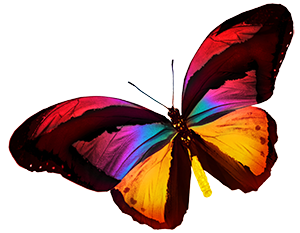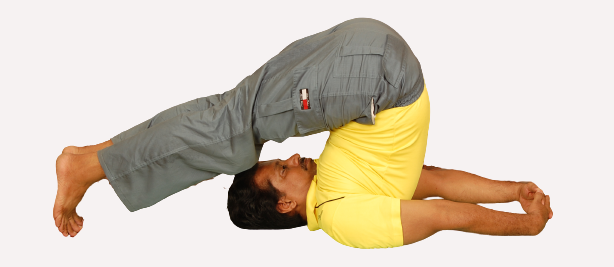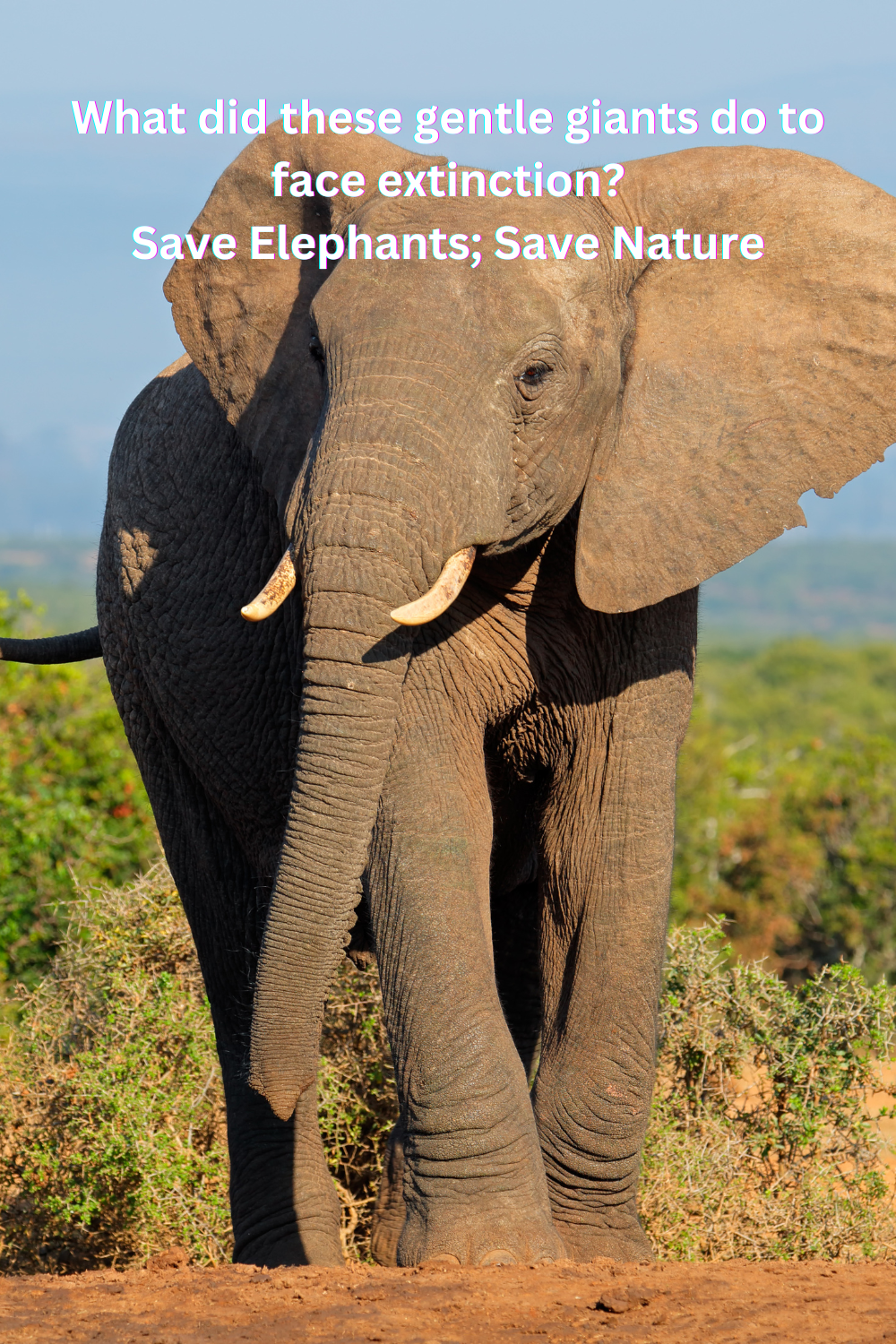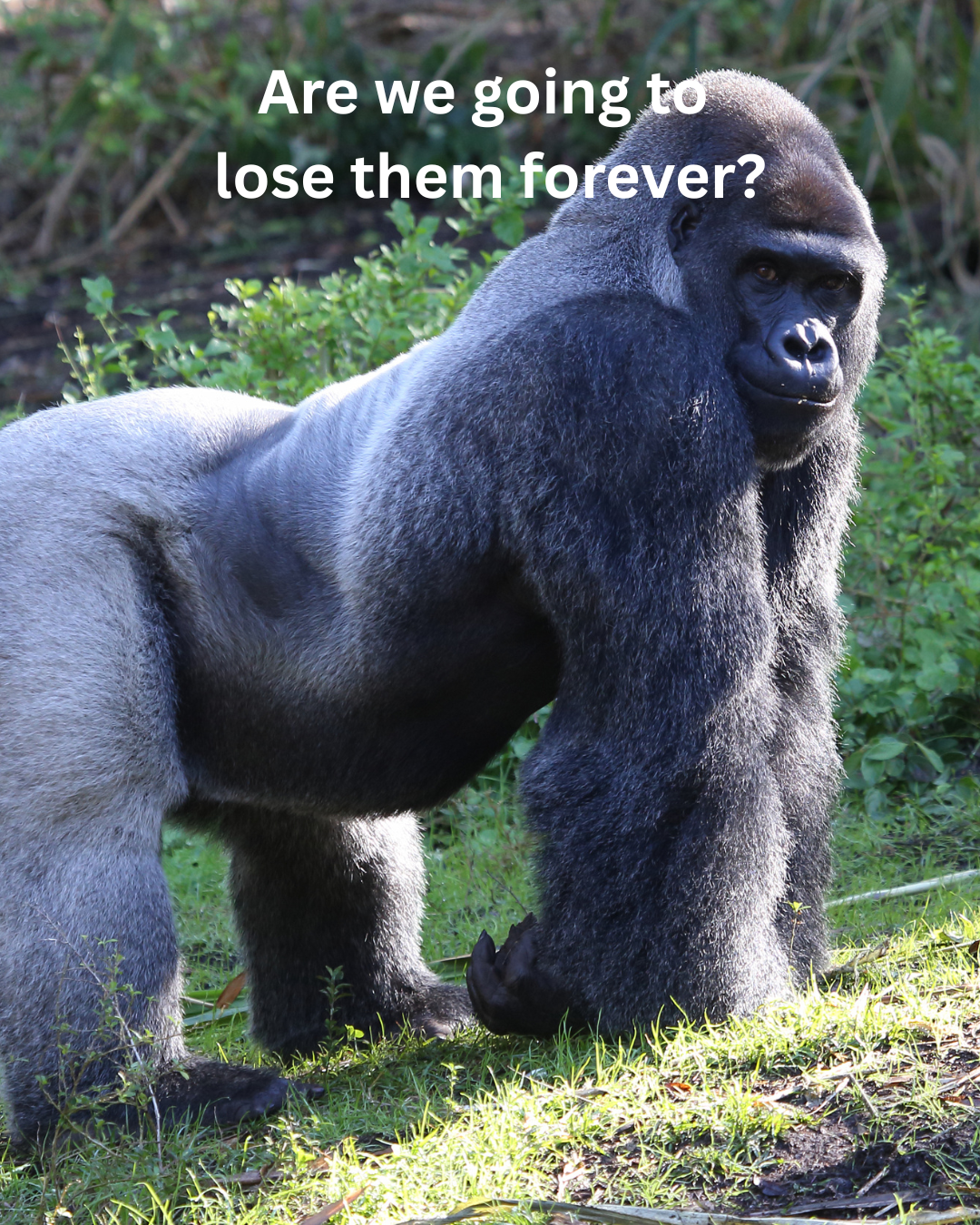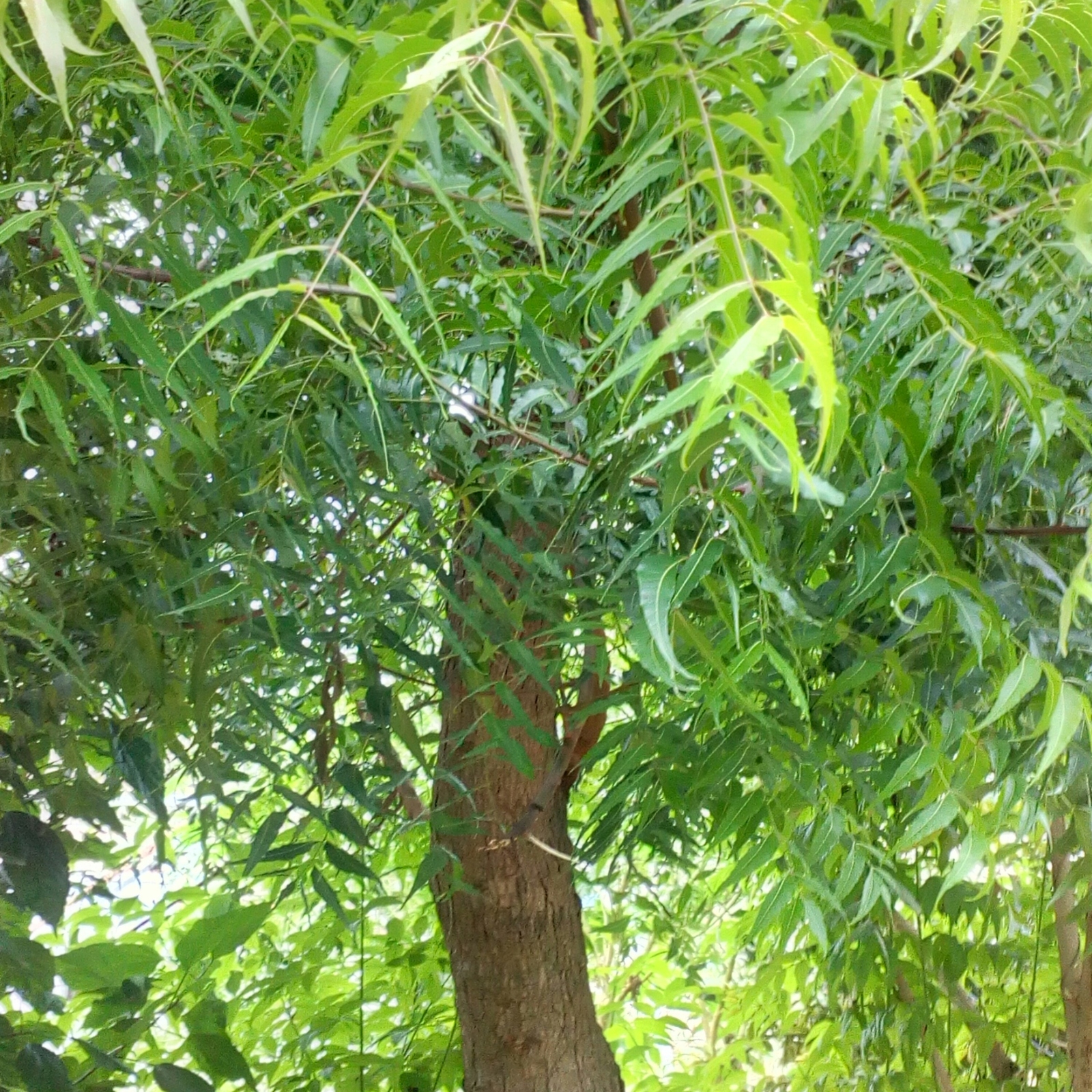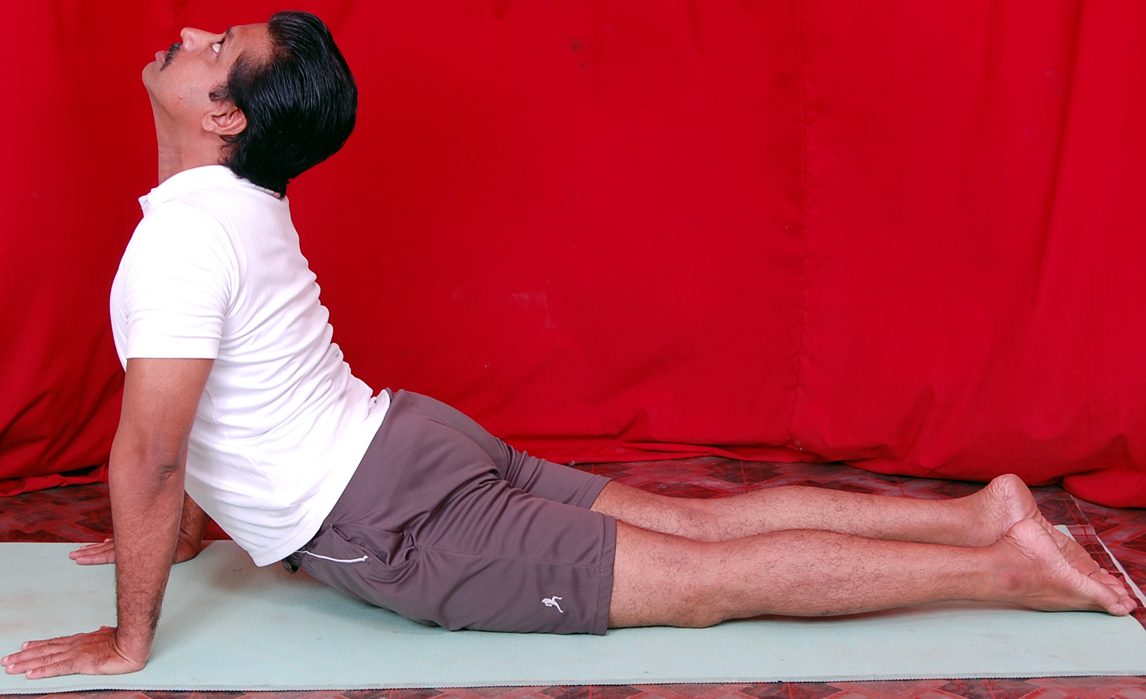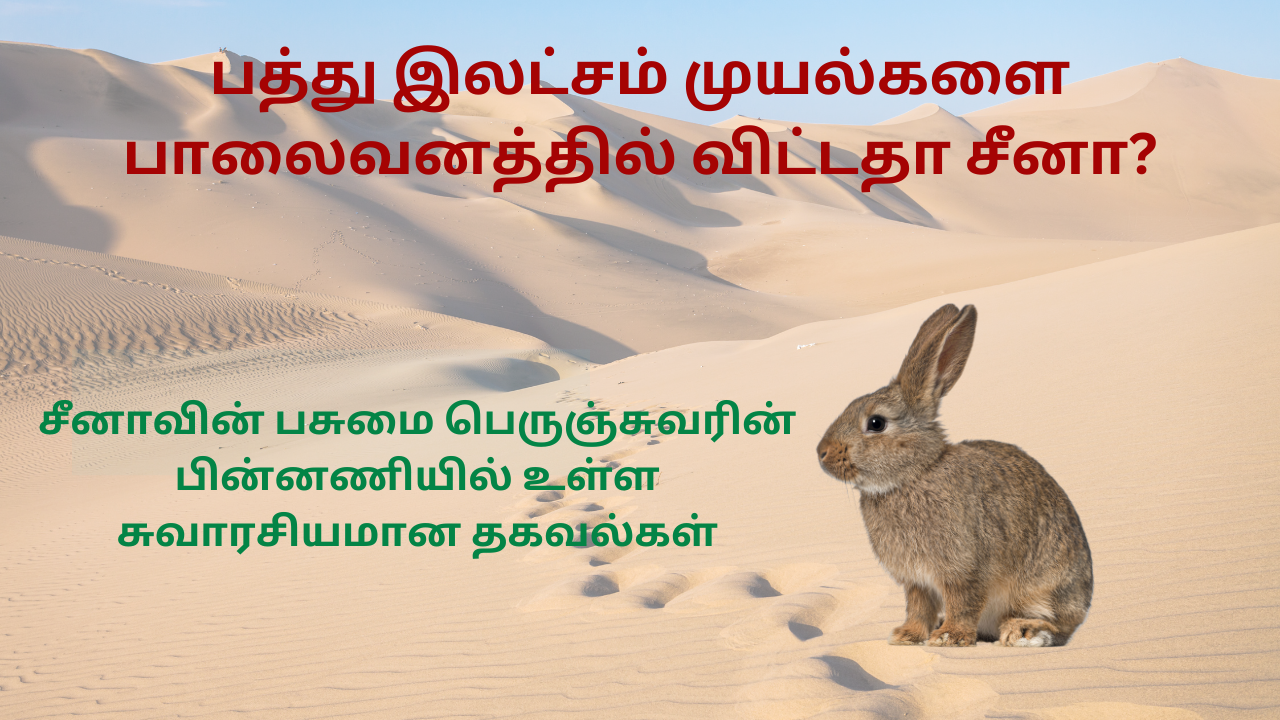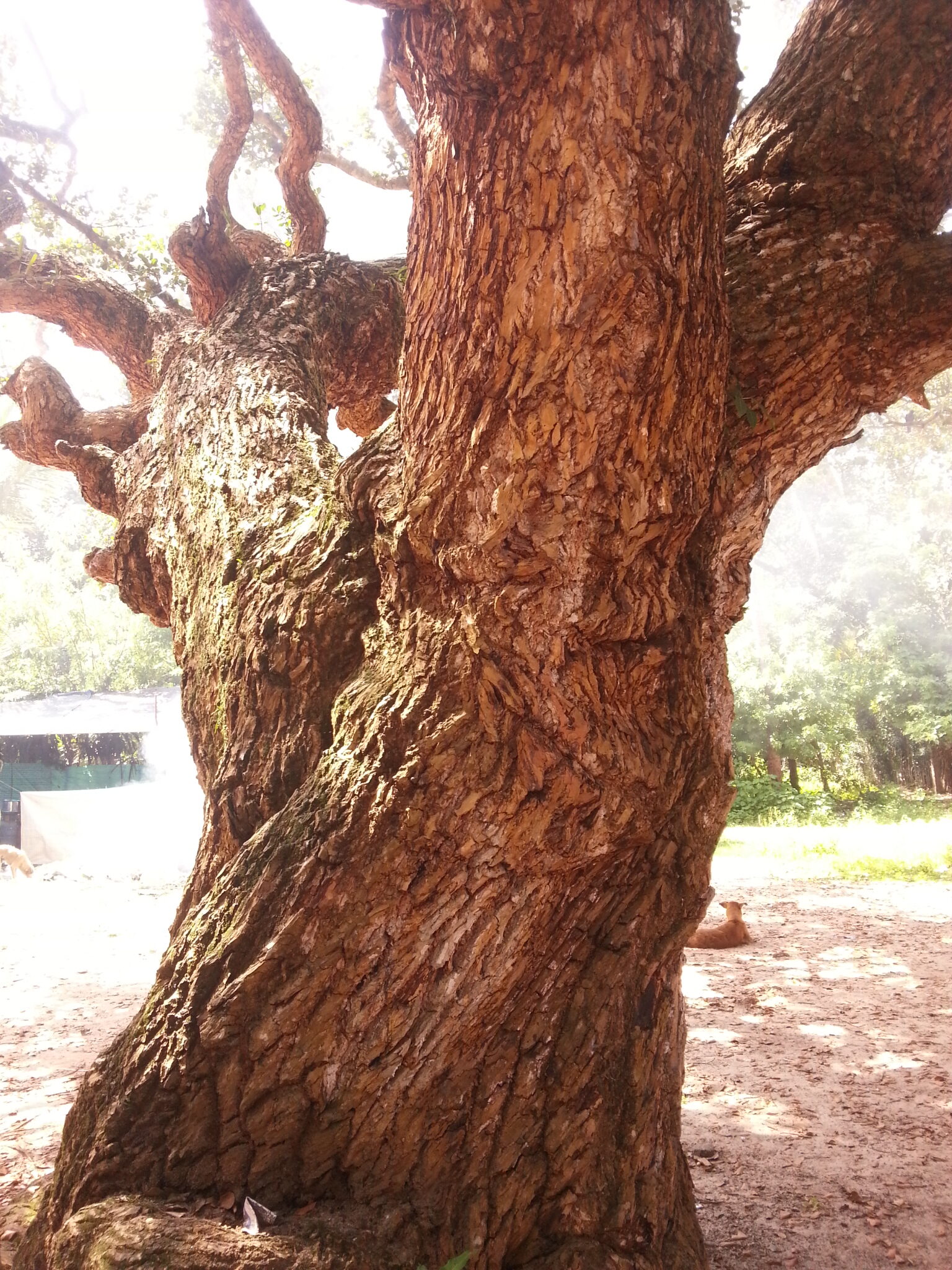In one of our earlier posts, we have covered the benefits and how-to-do of Half Plough Pose. Today's pose is a full version of Half Plough Pose, that is, Plough Pose. It is called as Halasana in Sanskrit. 'Hala' means 'plough'. Since the pose resembles the shape of a plough, it is named thus. Plough Pose is usually performed after Shoulder Stand.
Plough Pose stimulates manipura, anahata and visuddhi chakras. Hence, the ability to attract universal energy develops; love and affection for fellow beings develop. Communication skills and self-expression improve. Positivity and calmness develop.
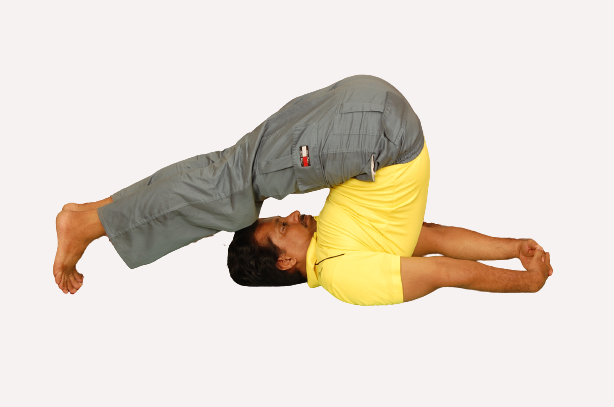
Other Benefits of Plough Pose
- Stretches the spine, improves spine flexibility and spine strength
- Back muscles are strengthened.
- Relieves back pain
- Strengthens lungs; relieves respiratory conditions including asthma
- Boosts functions of thyroid and parathyroid
- Promotes youthful appearance
- Energizes the body and mind
- Promotes functions of abdominal organs
- Reduces tummy fat
- Reduces excess fat in hips and thighs
- Promotes overall flexibility
- Boosts blood circulation
- Regular practice of the pose helps to strengthen the nervous system.
- Relieves headache
- Cures insomnia
- Aids in detoxification
- Cures infertility
- It strengthens legs.
- Regular practice of the pose helps to relieve menstrual pain.
- It cures fatigue.
- Boosts memory power
- Improves focus
- Practicing the pose helps to relieve stress.
Step-by-Step Guide
- Lie down on the floor. Place your hands by the sides of the body on the floor.
- Assume Shoulder Stand. To perform Shoulder Stand, exhale as you lift your legs upwards. Hold the buttocks with your palms and straighten your body so your body is aligned in one straight line from neck to feet. Inhale.
- Exhale and lower your legs towards the floor behind your face without bending the knees. Now your back will be straight and your chest and chin will be locked.
- You can hold the back with your palms. Alternately, you can place your arms on the floor and interlock your fingers as given in the pose above.
- Hold the pose for 30 seconds initially. With practice, you can increase the duration to 5 minutes.
Note
Those with severe neck conditions, spine and hip problems should refrain from practicing Plough Pose.
In case of difficulty in placing the feet behind the face on the floor, you can place a yoga block behind you and place your feet on the same. Alternately, you can place your feet on the wall behind you.
In case your neck hurts while your legs are on the floor behind you, you can place a folded blanket under your shoulders and neck.
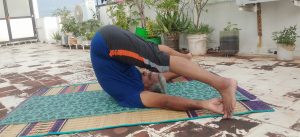
Yoga Pose for Day 92 - Reclining Angle Pose (Supta Konasana)
We have, earlier, covered the benefits and how-to-do of Bound Angle Pose and Upward Seated Angle Pose. Today will be about Reclining Angle Pose. The pose is called Supta Konasana in Sanskrit.
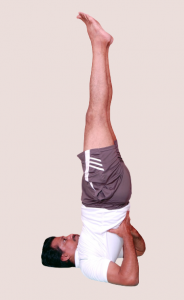
Yoga Pose for Day 90 - Shoulder Stand (Sarvangasana)
Shoulder Stand is called Sarvangasana in Sanskrit. 'Sarva' means 'all' and 'anga' means 'body parts'. This pose involves holding the weight of the body in shoulders and head. Shoulder Stand is called the Queen of all Yoga Poses.
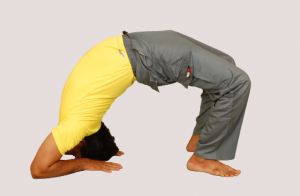
Yoga Pose for Day 89 - Bridge Pose on Elbows (Dhva Pada Dhanurasana)
Yesterday's post was about Four-Footed Pose, a variation of Bridge Pose. Bridge Pose on Elbows, which we are going to work on today is also a variation of Bridge Pose. The pose is called Dhva Pada Dhanurasana in Sanskrit. 'Dhva' means 'both', 'pada' means 'leg' and 'foot' and 'dhanur' means 'bow'.
